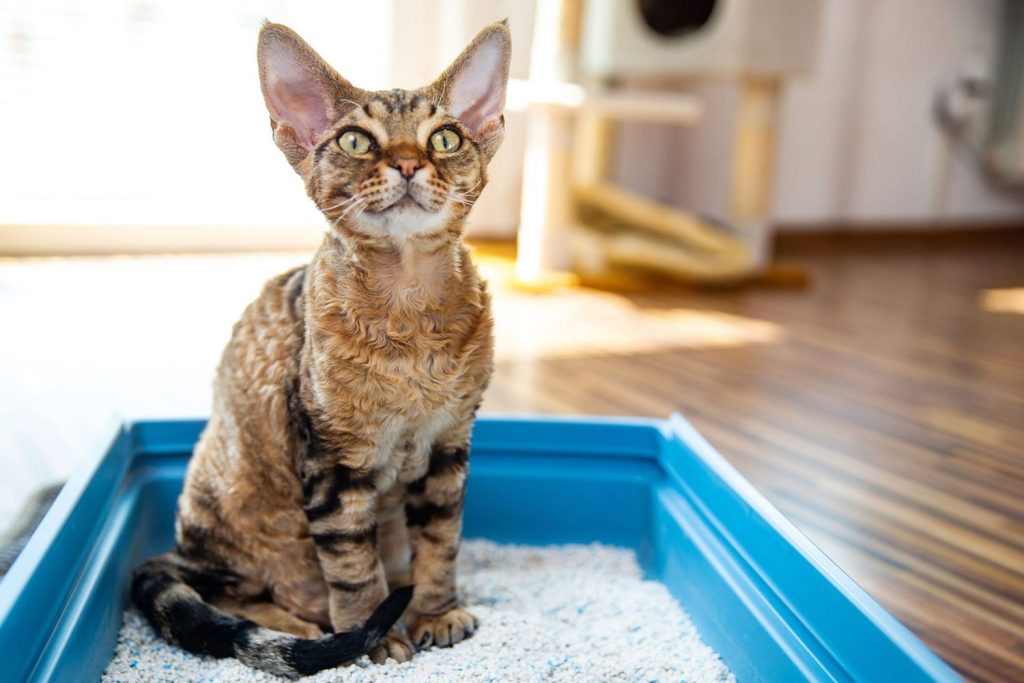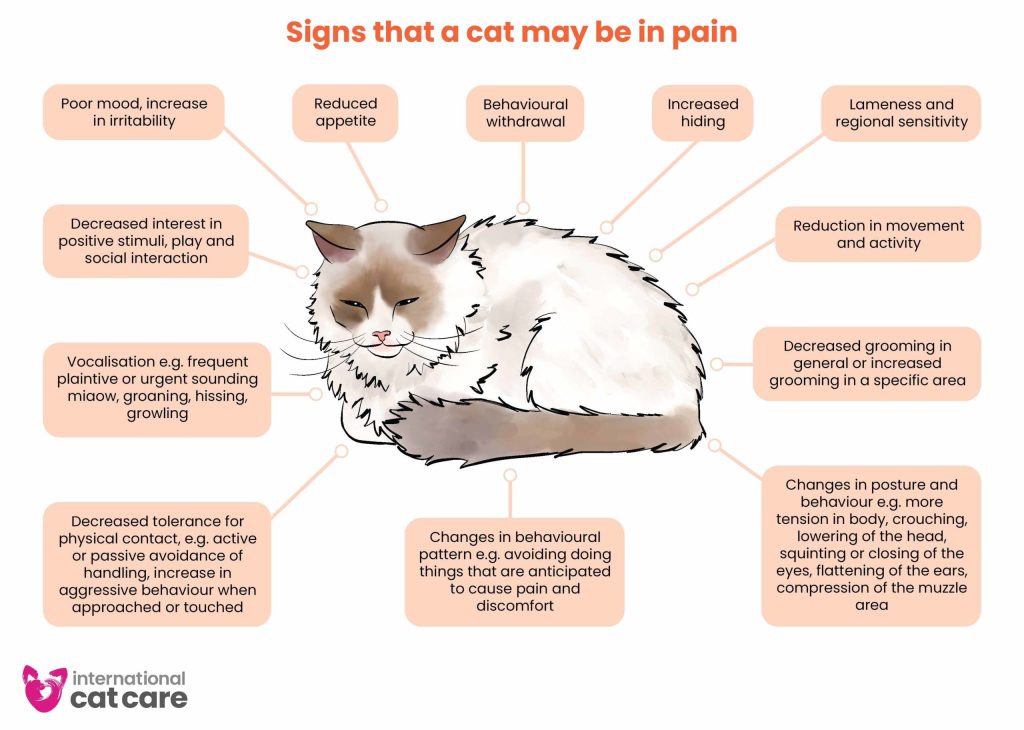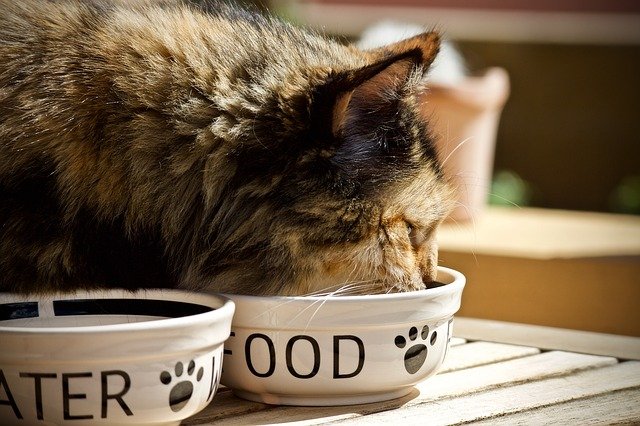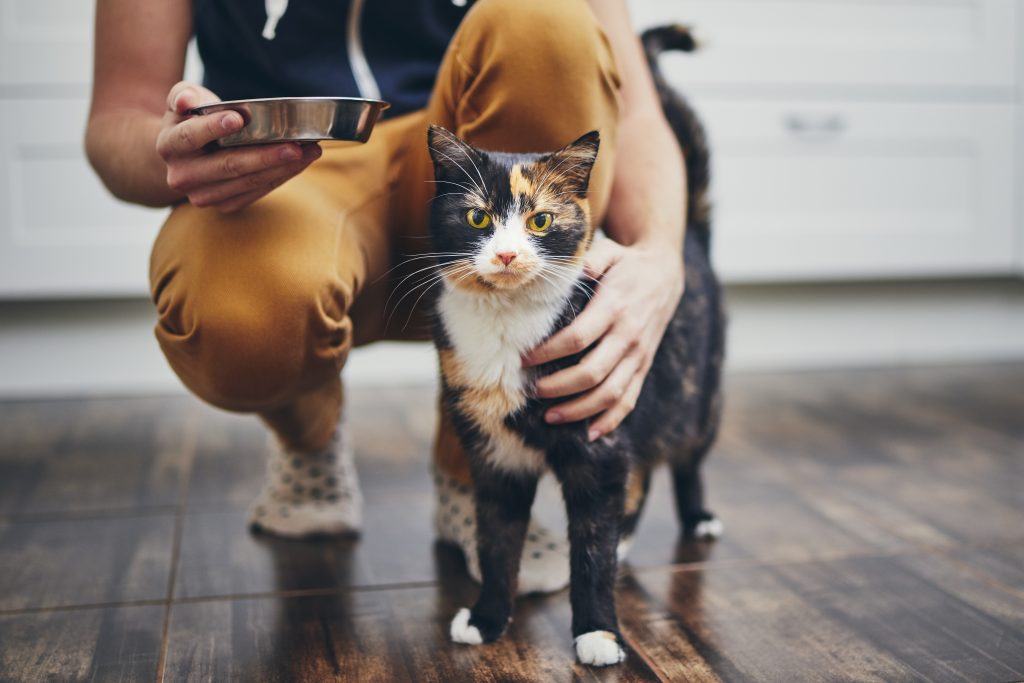Table of Contents
10 Tips for the Ideal Preparation of Your Cat When You Go on Vacation
Summer, sun, vacation time! You have a vacation or a trip planned, and you have to leave your cat alone at home? We at Cat in a Flat have compiled the 10 best tips for preparing your cat during your absence!
Local Cat Care
Whether you opt for an occasional neighbor visit, a cat sitter, or a cat boarding facility depends on you and your cat’s needs. Cats feel most comfortable at home. For most cats, a daily or twice-daily visit from a cat caregiver is sufficient. Each visit should include feeding, cleaning the litter box, and playing or cuddling – depending on the cat’s preference. Some cats need a bit more attention, either because they are very young or require medication several times a day. In such cases, a cat sitter who stays overnight might be a suitable option. In any case, we recommend taking care of your cat’s care well in advance and inviting your cat caretaker for a personal conversation.

Get to Know Your Cat Sitter
During the first meeting with you and your chosen cat caregiver, it can be very helpful to explain and show everything in detail. This includes, for example, eating habits, the storage location of cat food, the trash box, and your cat’s favorite places to stay and sleep. For very shy cats, the cat caretaker can also play with the cat to build trust. For your cat’s emotional preparation, you can also use a “Feliway” diffuser in the apartment before and during your absence. The pheromones diffused by the device contribute to the well-being and calming of the cat.
Litter Box and Cat Litter
When preparing your cat before departure, be sure to thoroughly clean the trash box. Also, make sure there is enough cat trash for the trash box and provide instructions to your cat caregiver on how often to clean it and where to dispose of the used trash.

Cat Food During the Holidays
Similarly, before your trip, ensure you have enough food for your cat and have it ready. For specific feeding habits and prescription diets, it is also wise to leave a note with precise feeding and preparation instructions.
Important Documents for Cat Care
Gather all essential documents related to your furry friend or create a folder. The most important documents include:
- Pet passport
- Vaccination record
- Contact information for the vet, examination reports for existing health problems if any
- Contact information where you can be reached during your absence
- Emergency number of a friend or acquaintance nearby
Preparation in Different Seasons
If you are traveling during the hot summer months, you can set up multiple water bowls in the apartment or house for your cat. For particularly lazy drinkers, the purchase of a drinking fountain can also be helpful. Discuss with your cat caretaker whether and how the apartment can be briefly aired during the visit. Ensure that your apartment always has a shady and cool place for your cat. If you are traveling in winter, don’t forget to keep your apartment warm enough so that your cat feels comfortable during your absence.
Avoiding Hazards for Cats in the House
Make sure there are no dangerous objects, poisonous plants, or accessible food items for the cat in your apartment. Most bookings involve on-site cat care with one or two daily visits to your home. However, your cat remains alone for a longer period during the day. Therefore, everything should be prepared in a way that there are no sources of danger for your kitty.
This also includes ensuring that all windows, terrace or balcony doors are closed and not left ajar, as this can lead to severe and fatal injuries to your cat. If the cat is an outdoor cat, be sure to inform the cat caretaker and explain the usual habits of the feline. So that your cat caretaker feels comfortable in your home from the beginning, we recommend, especially during the current Covid-19 risks, cleaning your apartment before the vacation and disinfecting all surfaces.
Individual Cat Care and Medications
If your cat requires a lot of care, it might be better to find a caretaker who stays overnight. This allows for much closer care. This is particularly recommended for smaller kittens, sick, or older cats. If your kitty needs medication, prepare the medications for your cat caretaker and explain the recommended administration of the drugs in advance. Please ask your cat babysitter to regularly send photos of your cat. Inquire about information regarding behavior. No one knows your kitten as well as you do, so you might notice something in the behavior that your cat caregiver doesn’t.

Inform Neighbors
Let your neighbors know that you will be away. This avoids unnecessary misunderstandings when the cat caretaker comes in and out of your place daily. If you have a particularly good relationship with your neighbors, you may also (by agreement) provide them with the contact details of the cat sitter. This way, they can reach the cat caregiver in all cases.
Other Tasks During Cat Sitting
Should the cat sitter also take care of your mail or plants? You can arrange this individually in advance. In any case, you should leave precise instructions or inform the sitter about everything important at the first meeting.
You have planned a short trip – what you need to consider
The weekend is within reach, the long-awaited visit with friends is coming up. Your cat stays at home – and should be well looked after while you are away. Is that possible? Yes. Don’t panic, you don’t have to go to a cat caretaker or a cat boarding facility. Cats are not loners , but it is okay for your cat to be alone for a night or two. Important: Your pet must be fully cared for.
What you need to pay attention to:
Provide sufficient food
Your pet needs species-appropriate, feed your cat healthy cat food at least twice a day. Especially when you are not at home, it is best to have a mix of hard food and hydrated food. Cats prefer to eat little much food, but more often. This means the metabolism is permanently stimulated and the cat simply feels better.
There is now technical support here – an automated feed dispenser with a timer releases the food at a pre-programmed hour and integrated cooling pads keep the hydrated food fresh and edible. The advantage here: your pet always gets its food at the same time.

Make sure you have enough drinking water
An adult cat weighing four kilograms needs around 200 ml of fresh water per day, larger cats a little more, smaller cats a little less. Especially when feeding hard food, it is important that your cat does not drink too little – otherwise it can quickly dehydrate. Many cats prefer a spatial separation between water and food areas – so place several water bowls separately from the food bowl. If your cat is lazy to drink, you can offer a cat drink. A special cat drink encourages many cats to drink significantly more.
Taking care of a clean litter box
Cats are particularly sensitive when it comes to toilet issues. A clean trash box is mandatory, otherwise it will not be used or your cat will look for another place. A cat needs a clean trash box to pass and bury its urine and feces. This means it should be cleaned after a maximum of 48 hours.
If you lock some doors and move the trash box to a different location while you are away, ensure your cat cannot be observed or disturbed by loud noises. A quiet, hidden place – that’s what cat at home needs.
What do cats actually do all day long?
Tips for keeping your cat occupied and equipped
Sleeping, dozing, watching moving objects – this is how a cat spends many hours of the day. The ranking of their well-being criteria is fixed: the main thing is warm, dry, preferably high up, hidden if possible and quiet. Oases of calm, viewing areas by the window, hiding places and cat furniture with climbing and scratching options in your apartment are important because cats have a natural urge to move and need to let off steam every now and then.
When it comes to housing and territory issues, humans and cats have different opinions. A – in our opinion – chic, minimalist apartment with little furniture and a lot of empty space is a nightmare for the hunter cat. So make sure you have empty boxes and the odd ball of paper and toy mice lying around to play with, especially if you leave your pet alone for long periods of time. But be careful: always think about your cat’s safety and definitely avoid rubber bands that the cat could get caught in.
How to find best cat nanny for your cat?
It’s best to meet with the potential cat caretaker a few weeks before your vacation. Invite him to your home, get to know him and watch how your furry friend reacts to him. Ask about his training – animal carers or veterinary assistants often offer their services. This way you can be sure that the cat caretaker can provide first aid to your pet in an emergency. Tell your cat carer exactly what you expect from him and what your cat needs.

Checklist: This is what the cat caretaker should know
- What does the cat like to eat most?
- When and how often does she get her food?
- Which treats are allowed between meals?
- How often does the litter box need to be cleaned?
- Where is the house cat allowed to stay and which rooms should it not enter?
- What is his favorite toy?
- Does the cat need medication and if so, how often?
- Does the animal need special fur care?
- Can the cat go out and if so, how often?
Also important for the cat caretaker:
- Transport box and vaccination certificate for emergencies
- Phone number and address of your veterinarian
- Your cell phone number
- Telephone number of your holiday accommodation
Tip : Record the scope of support with all tasks in writing in a contract – you can find sample templates online. Sign a copy for both of you to receive.
Automatic feeder for the cat instead of a food bowl: supplies on vacation
On long working days, it can happen that you don’t get home until late. In your absence, the little cuddly tiger is on his own. Playing, sleeping and lounging all work without your help. However, when feeding, four-legged friends need the help of their owner or a technical dispenser. The self-feeding cat dispenser takes care of your pet, even if you are away for a long time, away or on a short trip.
- An automatic dispenser helps you stick to habits and feeding times so that you can eat on time as usual.
- Thanks to modern technologies, there is an automatic dispenser for cats with a chip as well as models that can be controlled via an app.
- The self-feeding cat dispenser is suitable for single households as well as for temporary absences of the pet owner.
Food dispenser: This is how timed feeding of the cat works
In the office you were surprised by the boss’s announcement, because the 3-day business trip wasn’t an issue that morning. Of course, your thoughts immediately turn to your little four-legged friend who is waiting for you at home. An automated water and dispenser for cats, dogs, etc. is the perfect solution. You don’t have to worry about whether the cuddly tiger is well looked after. The food and water dispenser is suitable for several days of absence. There are models that are enough for up to 2 meals. You can also get dispensers in stores that hold up to 2.5 kilograms. These variants are enough for around 50 meals, so you can go on vacation with an self-feeding cat dispenser.

The beautiful and practical thing about these machines is that they adhere to feeding times on time. This is particularly recommended for house cats because cats are creatures of habit. An automatic dispenser with a timer allows you to feed as usual. The animals are reluctant to change their well-functioning routine. If you set the device to individual meal times, all habits will be respected. Therefore, there is no doubt that an automatic dispenser will care for and feed cats while you are unable to do so.
Automatic cat feeders in different sizes
Basically, an self-feeding cat dispenser always works according to a similar scheme. The integrated bowl is filled either automatically by a dispenser or by the pet owner before they are away. The food remains hidden until the individually saved time – the feeding time – is reached. The machine then unlocks so that the feed is either visible through a turntable or filled in via a dispenser. However, the products differ in size.
| Automatic feeder for two cats | Automatic feeder for a cat |
| An self-feeding cat dispenser with a chip is recommended here. | A classic food dispenser is suitable for a household with one animal. There is no food envy here. |
| The self-feeding cat dispenser with chip recognition prevents food theft in a household with several animals. However, the four-legged friends also need a chip or a compatible collar. | If necessary, it is also possible to use very modern models. An self-feeding cat device with app control is also easy to use on the go. |
| In addition, a microchip-controlled machine makes it possible to better provide sick animals with individual medication. This is particularly advantageous for households with two pets. | With remote control via app, you have the opportunity to plan new feedings in the event of complications or the like. This makes feeding while traveling completely worry-free. |
There is no question that a modern automatic feeder makes cats and their owners happy. When it comes to appearance, many models have high-quality designs and still deliver what they promise. Whether controlled by app, chip or timer, you can decide individually according to your taste.
What is the difference between wet food and dry food in a cat feeder?
Food and water dispensers differ not only in their control technology, but also in their intended use. There is a special dispenser for cats with a feeding bowl for dry or hydrated food.
- Automatic feeder for hard food: These are the classic models. They either have a container with the food to pour into the bowl or a rotating system with a disc. The latter always reveals the “due” portion in the cat dispenser.
- Automatic feeder for hydrated food: cooling is the key. In contrast to the hard food dispenser, the hydrated food model is more complex. The fresh food must be chilled. This is done using cooling batteries or an airtight seal. This is the only way to serve your pet a fresh meal.
There are also dispensers that are suitable for both types. It is important that you make sure that this self-feeding cat dispenser is equipped with cooling for the wet food.

How to Feed Feral Cats While on Vacation: Risks & Tips
Feeding feral kitty on break requires careful planning to ensure the cats’ well-being and your own peace of mind. Here are some tips and considerations:
Risks:
- Dependency:
- Regular feeding can create a dependency, and the sudden absence of food when you leave may impact the cats. Try to find a sustainable long-term solution or inform local caregivers.
- Predators and Dangers:
- Frequent feeding may attract other animals or predators to the feeding area, posing risks to the feral cats.
- Health Concerns:
- Without proper monitoring, health issues in feral cats may go unnoticed. Regular dispensers often become the primary source of healthcare for these cats.
Tips for Feeding Feral Cats While on Vacation:
- Establish a Feeding Routine:
- If you regularly feed feral cats, establish a consistent feeding routine. Cats are creatures of habit and can adapt to a predictable schedule.
- Collaborate with Local Caretakers:
- Before your vacation, collaborate with local animal welfare organizations, neighbors, or designated caretakers who can take over the feeding responsibilities.
- Provide Dry Food:
- Dry cat food is convenient for feeding feral cats as it doesn’t spoil quickly. Ensure it’s placed in secure feeding stations to prevent it from getting wet or attracting unwanted animals.
- Automated dispensers:
- Consider using automated cat dispensers that dispense food at scheduled times. This can help maintain a consistent feeding schedule even when you’re away.
- Secure Feeding Stations:
- If you use feeding stations, make them secure and inaccessible to other animals. Elevated platforms or enclosed areas can deter unwanted visitors.
- Leave Extra Food:
- Leave extra food in case the designated caretaker is unable to visit daily. Ensure it’s stored in a way that prevents spoilage.
- Provide Shelter:
- If possible, provide shelter or a safe space for the feral cats. This can protect them from the elements and potential dangers.
- Communicate with Neighbors:
- Inform your neighbors about your absence and the feeding arrangement. They may be willing to assist or keep an eye on the feeding area.
- Medical Records:
- If you’ve been providing healthcare for the feral cats, leave detailed medical records and contact information for local veterinarians or animal welfare groups.
- Consider Hiring a Pet Sitter:
- If the feral cats are in a residential area, consider hiring a professional pet caretaker to manage the feeding routine in your absence.
- Check Local Regulations:
- Ensure you are in compliance with local regulations regarding feeding feral cats. Some areas may have guidelines or restrictions on feeding outdoor animals.
Remember, the goal is to provide a solution that maintains the well-being of the feral cats while you’re away. Collaborating with local caretakers or organizations can create a more sustainable and reliable plan for the care of these cats during your vacation.
FAQs
Q: How can I make sure my cat is fed while I’m on vacation?
A: You can either hire a professional cat caregiver or ask a friend or family member to take care of your cat’s feeding while you’re away.
Q: Is it safe to leave my cat alone at home while I’m on vacation?
A: Leaving your cat alone at home while on vacation can be safe if you ensure they have plenty of nourishment, along with making sure the environment is safe for them.
Q: Can I feed my cat moist food while I’m away?
A: Yes, you can ask the pet caregiver to feed your cat moist food according to the schedule you provide.
Q: What are the best options for feeding my cat while I’m away on vacation?
A: The best options include hiring a professional pet caregiver, asking a friend or family member for help, or using an automatic feeder.
Q: How can I ensure my cat has enough nourishment while I’m gone?
A: You can leave a water fountain and assure your cat has an adequate amount of food, along with making sure someone visits them regularly.
Q: Should I be concerned about my cat being at home alone for an extended period of time?
A: It’s important to make sure your cat has proper care and attention even when you’re away to avoid separation anxiety or any other issues.
Q: What should I do to prepare my cat for me being away on vacation?
A: Make sure your cat has plenty of toys, leave them in a safe environment, and guarantee your cat will be fed and cared for while you’re away.
Q: Can I take my cat to a kennel while I’m on vacation?
A: While some cats may do well at a kennel, using a professional pet caregiver or having someone take care of them at home is often the best way to assure your cat is comfortable and well taken care of.
Q: What are the advantages of using a professional pet caregiver to feed my cat while I’m on vacation?
A: A professional pet caregiver can provide personalized attention, ensure your cat is fed and cared for according to your instructions, and can recognize and address any issues that may arise while you’re away.
Q: Is it okay to leave electric cords accessible to my cat while I’m away on vacation?
A: It’s unsafe for your cat to have access to electric cords and other potential hazards while you’re away, so it’s important to make sure your home environment is safe for your cat before you leave.